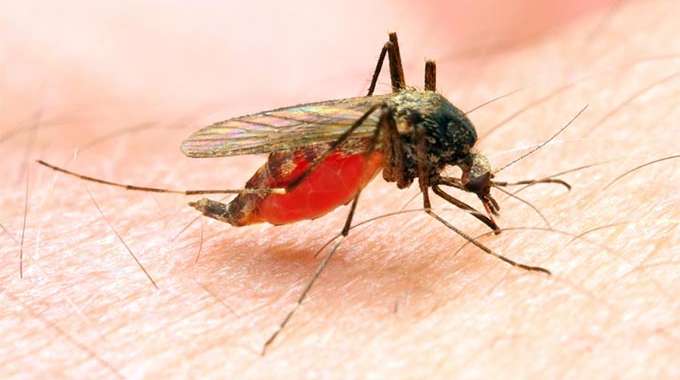Climate change: How malaria could spiral out of control

Jeffrey Gogo Climate Story
Climate change is having an impact on the spread of malaria in Zimbabwe, anecdotal evidence suggests.
A severe outbreak is spreading in Chimanimani on the eastern border with Mozambique, likely due to warmer temperatures and in the next 60 years could cause Malaria incidences to double.
On Friday, a nurse at a clinic in Muchadziya Village was quoted by this paper blaming the sudden surge in malaria cases – put at 200 since Cyclone Idai — on poor prevention from the Mozambican side.
Villagers criss-cross the artificial political boundary for trade, cattle grazing, family ties, and as it turns out, for treatment.
Of all the incidences handled at Muchadziya local clinic in the past six months, more than two thirds originate from Mozambique.
While Tatenda Zuze’s argument might be true, the nurse fails to reconcile the link between global warming and disease outbreak.
According to the UN’s expert panel on climate change, rising global temperatures have multiplied the risk of malaria in tropical countries like Zimbabwe and Mozambique, creating a new threat from an old enemy. The panel said in its Fifth Assessment Report that it expects cases of malaria in regions like Chimanimani, already a hotspot, to double by 2080, and possibly expand into new areas that are currently malaria-free.
Now, temperatures have already been soaring in Zimbabwe, rising 0,8°C, on the average, since the early 1900s. The trajectory is not expected to stop. The Intergovernmental Panel on Climate Change (IPCC) forecasts temperature rise to tip the scale at about six degrees Celsius by the end of this Century for Sub-Saharan Africa.
The upper safe limit is a temperature increase of 1,5°C, scientists say.
It means climate change could spell disaster for those communities in Zimbabwe already living in malaria-prone areas because warmer temperatures create fertile breeding conditions for the malaria-carrier, Anopheles mosquito.
Indeed, a report that appeared in the journal Nature Climate Change in 2013 speaks of how, in the last 50 years, hundreds of dangerous pests and pathogens have shifted their ranges towards the poles by an average 3 kilometres per year.
But insects — like the mosquito — have been much quicker in their expansion, increasing their range by tens of kilometres a year, it said, blaming the movements on climate change.
It is a poser for the Government and the people in Rushinga, Muzarabani, Centenary, Mbire, Guruve, Mt Darwin and Mazowe in the Mashonaland Central province and those in Buhera District of Manicaland province that face the greatest risk.
Other high risk areas include Triangle and parts of Chipinge’s low lying areas.
There’s evidence that suggests malaria, considered the third cause of illness and mortality in Zimbabwe, is already spiralling out of control.
Since 2014, illnesses and deaths linked to the disease have risen, threatening a return to the 5 000 per year deaths reported in the early 2000s.
According to some estimates, domestic incidences of malaria could top two million within a few decades due to poor response. There’s danger of reversing progress achieved before 2012 in limiting deaths related to malaria to just 350 per year, they say.
Communities like Tatenda Zuze’s Muchadziya Village — along with large parts of eastern Zimbabwe, top to bottom — have been particularly hard hit by changes in the natural world.
And while there’s yet no clear scientific indication how cataclysmic Cyclone Idai may have led to a spike in malaria cases in Chimanimani, if any, there is still some options for mitigation.
If the world does not eventually slow and reverse human-driven climate change, live-as-you-go options include accelerated and widespread distribution of mosquito, repellants, medicines and other items by the State, private sector, non-governmentals and development agencies.
God is faithful.










Comments